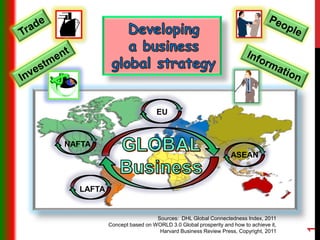The document discusses global connectedness, highlighting the trade ratios of different countries and the potential for growth in international trade, foreign direct investment, and communication. It illustrates how connectedness varies between nations, emphasizing factors such as domestic market size and cultural differences, and suggests strategies for enhancing global value creation. Overall, it underscores the importance of understanding geographical, economic, administrative, and cultural distances in shaping global business strategies.








































